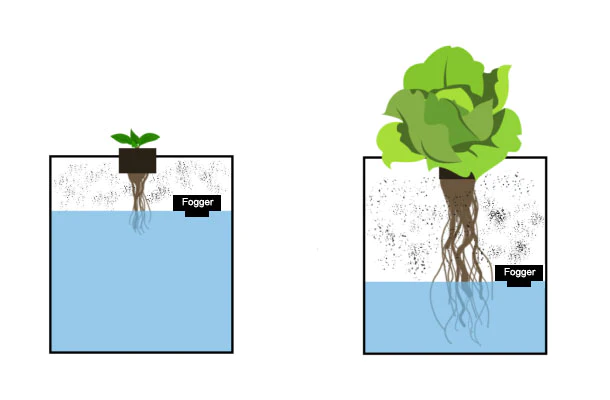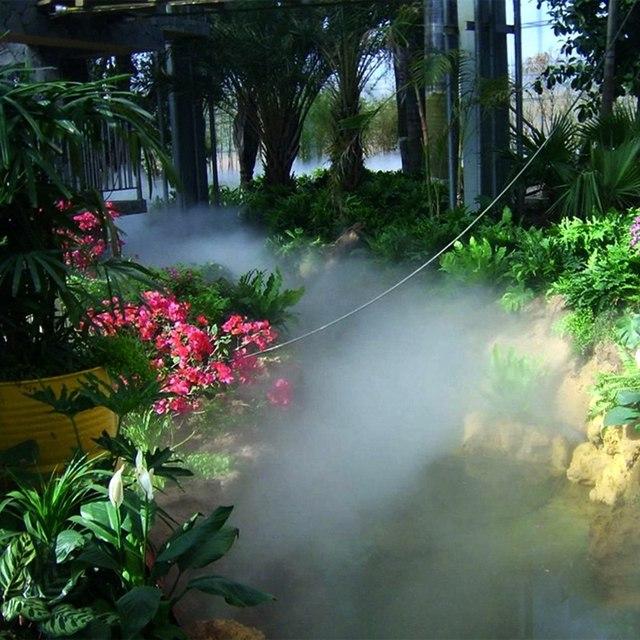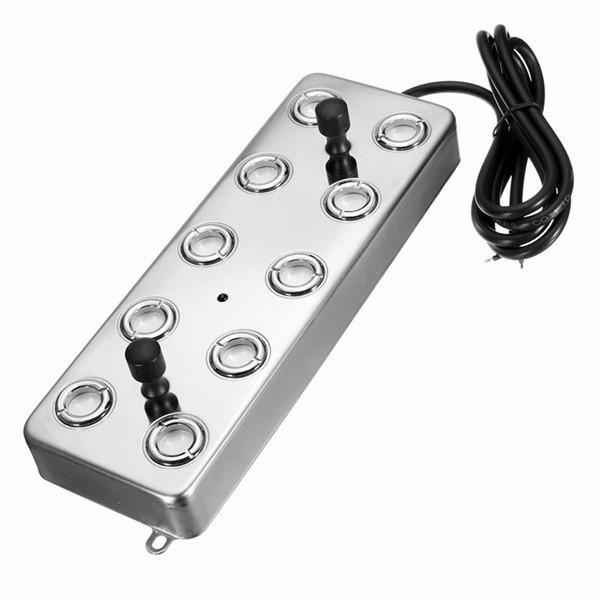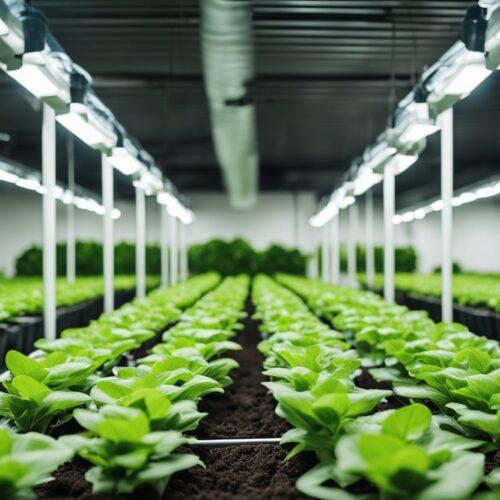Ultrasonic hydroponic foggers have become increasingly popular among indoor gardeners. These devices use ultrasonic waves to create a fine mist that provides moisture to plants grown in hydroponic systems. The fogger’s mist is so fine that it can penetrate the leaves and roots of plants, providing them with the necessary nutrients and moisture they need to grow.
Ultrasonic hydroponic foggers are an excellent alternative to traditional watering methods, as they provide a consistent and even distribution of moisture. This makes them ideal for growing plants that are sensitive to overwatering or underwatering. Additionally, ultrasonic foggers can help increase humidity levels in indoor gardens, which is crucial for plants that require high levels of moisture to thrive. With these benefits, it’s no wonder why ultrasonic hydroponic foggers have become a popular choice for indoor gardeners looking to improve their plant’s health and growth.
Ultrasonic Hydroponic Fogger: An Overview
Ultrasonic hydroponic foggers are misting devices that use high-frequency sound waves to create a fine mist of water droplets. These devices are commonly used in hydroponic systems to increase humidity levels and provide moisture to plants. They can be a useful tool for growers looking to enhance humidity and provide moisture. If you want to learn more about different hydroponic methods and choose the right one for your needs, you can refer to the article ‘Hydroculture vs Hydroponics: Which Method is Right for You?’
Operating on the principle of a piezoelectric transducer, ultrasonic foggers create high-frequency vibrations in the water, breaking it up into small droplets released as a fine mist. This mist is carried by air currents to the plants, delivering moisture and augmenting humidity. One of the benefits of using an ultrasonic hydroponic fogger is that it can help reduce water usage in hydroponic systems. This can be particularly advantageous when combined with innovative soilless growing techniques. For example, the ‘Legendary Kratky Method – Growing Plants Without Soil & Without Watering’ article explains an efficient soilless technique that requires no watering.
To maximize the effectiveness of an ultrasonic hydroponic fogger, it is important to monitor humidity levels and use clean water to prevent mineral deposits that can reduce the device’s efficiency.
Key Components of Ultrasonic Hydroponic Fogger
Ultrasonic hydroponic foggers are an innovative way of providing moisture to plants grown in hydroponic systems. These devices use ultrasonic vibrations to create a fine mist of water droplets that can be absorbed by plant roots. The key components of an ultrasonic hydroponic fogger include the ultrasonic module, water reservoir, and fog nozzle.
Ultrasonic Module
The ultrasonic module is the heart of the ultrasonic hydroponic fogger. This component uses high-frequency vibrations to create a fine mist of water droplets. The module consists of a piezoelectric transducer that vibrates at a frequency of 1.7 MHz. This high-frequency vibration causes the water in the reservoir to atomize, creating a fine mist that is released through the fog nozzle.
Water Reservoir
The water reservoir is another important component of the ultrasonic hydroponic fogger. This component holds the water that is used to create the mist. The size of the reservoir depends on the size of the hydroponic system. A small hydroponic system may require a reservoir of 1–2 liters, while a larger system may require a reservoir of 5–10 liters.
Fog Nozzle
The fog nozzle is the final component of the ultrasonic hydroponic fogger. This component releases the mist created by the ultrasonic module into the hydroponic system. The nozzle is typically made of plastic or metal and is designed to create a fine mist that can be easily absorbed by plant roots.

You can have short product description here. It can be added as and enable/disable toggle option from which user can have control on it.
Benefits of Using Ultrasonic Hydroponic Fogger
Enhanced Plant Growth
Ultrasonic hydroponic foggers can improve plant growth in several ways.
- First, the fine mist created by the fogger helps to increase the humidity level in the growing area. This is particularly beneficial in arid environments or during dry seasons, when plants may struggle to retain moisture. Increased humidity can also help to prevent the growth of harmful bacteria and fungi, which can damage plant roots and reduce yields.
- Second, the fogger can help to distribute nutrients more evenly throughout the growing area. The mist created by the fogger can carry nutrients to the plant’s roots, allowing them to absorb the necessary minerals and vitamins more efficiently. This can lead to faster growth, healthier plants, and higher yields.

Water and Nutrient Efficiency
Ultrasonic hydroponic foggers can also help to conserve water and nutrients. Because the fogger creates a fine mist, less water is required to maintain the desired humidity level in the growing area. This can be particularly beneficial in areas where water is scarce or expensive.
Additionally, the fogger can help to reduce nutrient waste. By distributing nutrients more evenly throughout the growing area, the plants are able to absorb more of the necessary minerals and vitamins.
Space Optimization
Finally, ultrasonic hydroponic foggers can help to optimize growing space. Because the fogger creates a fine mist, it can be used in areas with limited space, such as vertical gardens or small grow tents. The mist can be directed toward the plants’ roots, allowing them to absorb the necessary nutrients without taking up valuable floor space.
Challenges and Solutions in Using Ultrasonic Hydroponic Fogger
Pros and Cons of Using Ultrasonic Hydroponic Fogger:
Maintenance
Like any other hydroponic system, an ultrasonic hydroponic fogger requires regular maintenance to ensure optimal performance. The tiny nozzles in the fogger can become clogged with mineral deposits from the water, reducing the fogger’s efficiency. To prevent this, it is recommended to use distilled water or a water softener to reduce the mineral content in the water. Alternatively, the nozzles can be cleaned regularly with a soft brush or by soaking them in vinegar.
Noise Management
Ultrasonic hydroponic foggers can produce a high-pitched noise that can be annoying to some people. To reduce the noise level, it is recommended to place the fogger in a soundproof enclosure or in a separate room. Additionally, using a larger fogger can reduce the noise level as the larger size allows for quieter operation.
Water Quality Control
Water quality is an important factor in the success of any hydroponic system. Ultrasonic hydroponic foggers can be sensitive to changes in water quality, which can affect the fogger’s efficiency. It is important to monitor the water quality regularly and make adjustments as necessary. pH levels should be maintained between 5.5 and 6.5, and the water should be changed regularly to prevent the buildup of harmful bacteria.
Choosing the Right Ultrasonic Hydroponic Fogger
When it comes to selecting an ultrasonic hydroponic fogger, there are a few key factors to consider. Here are some important things to keep in mind when choosing the right one for your hydroponic setup.
Size and Capacity
One important consideration is the size and capacity of the ultrasonic hydroponic fogger. This will depend on the size of your hydroponic system and the amount of fog you need to produce.
Quality and Durability
Another important factor to consider is the quality and durability of the ultrasonic hydroponic fogger. Look for a fogger that is made from high-quality materials and is built to last. This will ensure that you get the most out of your investment and that your hydroponic system stays running smoothly.
Ease of Use
Finally, it’s important to choose an ultrasonic hydroponic fogger that is easy to use. Look for a fogger that is simple to set up and operate, with clear instructions and intuitive controls.






1 comment